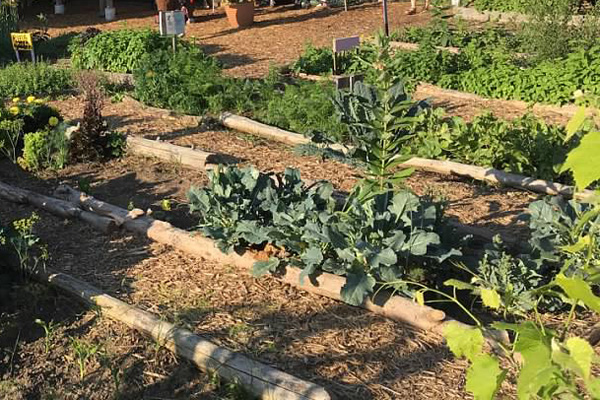The Best Guide To City Blooming
The Best Guide To City Blooming
Blog Article
A Biased View of City Blooming
Table of ContentsFacts About City Blooming RevealedThe 4-Minute Rule for City BloomingCity Blooming Fundamentals ExplainedSee This Report on City BloomingThings about City Blooming
Interested in expanding food to buy in the City of Chicago? Considering starting a community yard? Adjustments to the Chicago Zoning Regulation permit farming uses like area gardens and urban ranches in many components of the city. Below is a list of regularly asked questions regarding the rules and laws that cultivators need to consider when planning a metropolitan farming task.
The zoning modification does not change any type of other codes managing composting, building licenses, purchasing or renting City had residential or commercial property, company licenses or ecological contamination. There are existing codes that control these problems and they remain in full effect and may be appropriate to your task. Area yards are usually had or managed by public entities, public organizations or community-based companies and maintained by volunteers.
Urban farms grow food that is meant to be sold, either on a nonprofit or for-profit basis. Due to their business purpose, metropolitan farms require a company license.
What Does City Blooming Do?
Composting is allowed but only for plant product that is created and made use of on website. The quantity of compost material can not exceed 25 cubic backyards at any kind of given time according to the standards in 7-28-715 of the City's Municipal Code. Yes. Due to the fact that the dirt at the majority of new garden websites needs modifying, garden compost, dirt, timber chips, or other materials can be obtained to create or enhance the growing room - urban gardening.

If a structure license is required then the hoophouse will certainly be considered an accessory building. You can find out even more regarding the structure permit needs by getting in touch with the Division of Structures. The 25,000-square-foot size limit is meant to avoid a single neighborhood yard from controling a given block or taking away from the block's existing domestic or commercial character.
The limitation does not put on yards situated in Public Open Area (POS) districts. Can there be more than one neighborhood garden that is 25,000 square feet on a single block? Yes. The size limit puts on private yards, not to private blocks. No. Fence is not needed, nonetheless, gardens that have big vehicle parking locations might be required to set up secure fencing or other landscaping attributes.
The Ultimate Guide To City Blooming
B1 & B2 areas call for that all business usage activities be conducted inside your home. Is fence needed for city farms? Fences might be called for, along with landscape design and screening, for particular auto parking areas and outside job or storage areas depending on location and the certain activity taking area.
Urban ranches need structure authorizations and zoning authorizations prior to construction (City gardening). Other forms of city evaluation may be required depending on details structures, activities, dimension, landscaping, licensing, public heath and stormwater monitoring concerns.
Yes. The kind of license is figured out by what is happening at the website. The Department of Business Affairs and Customer Security can aid identify the certain sort of business permit that's called for. Yes. Off street car park is needed for the majority of commercial jobs in Chicago. The needed number of garage is based upon the variety of employees dealing with website and not the square video footage of the expanding space.
Unknown Facts About City Blooming

A metropolitan farm can offer compost product created on website, nevertheless, the procedure needs to comply with the laws in 7-28-715 of the Chicago Municipal Code. Aquaponic systems are enabled inside your home on urban farms in numerous zoning areas.
As much as five hives or colonies of honey might be maintained as an accessory use. Nevertheless, beekeepers need to register with the Illinois Division of Agriculture. For more details about the proposed zoning amendment you might call the Division of Housing and Economic Development, Bureau of Planning and Zoning at 312.744.8563.
Farming in cities and city locations An urban farm in Chicago. Urban agriculture refers to numerous practices of growing. https://amber-gnu-kr6lr9.mystrikingly.com/blog/city-gardening-cultivating-green-spaces-in-urban-jungles, processing, and distributing food in city areas. The term also relates to the area activities of pet husbandry, aquaculture, beekeeping, and gardening in a metropolitan context. Urban agriculture is distinguished from peri-urban agriculture, which takes place in rural areas at the side of residential areas.
The smart Trick of City Blooming That Nobody is Discussing
It can include a motion of organic growers, "foodies" and "locavores", who look for to develop official site socials media based on a common values of nature and area holism. These networks can establish by method of formal institutional assistance, coming to be integrated right into regional town planning as a "shift community" motion for lasting urban advancement.
In either situation, the more straight access to fresh vegetable, fruit, and meat products that may be become aware through urban agriculture can enhance food protection and food safety and security while decreasing food miles, leading to lower greenhouse gas exhausts, therefore adding to environment modification mitigation. A few of the initial evidence of urban agriculture comes from Mesopotamia.
Report this page